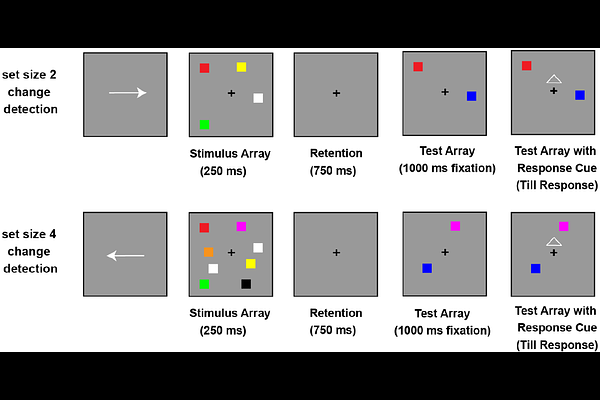Mechanisms of Output Gating for visual working memory

Mechanisms of Output Gating for visual working memory
Zhao, C.; Adekoya, T.; Horwitz, S.; Awh, E.; Vogel, E. K.
AbstractWorking memory tasks often require comparing remembered visual arrays to test displays, yet little is known about how people edit the contents of working memory at test. Across three experiments, we used contralateral delay activity (CDA) as a neural index of working memory load to examine how memory representations are selectively accessed at test. In Experiment 1, when a single test item was probed, CDA amplitudes increased with larger set sizes, indicating that untested items were still actively maintained, suggesting minimal editing based on spatial location. To test whether this was due to spatial grouping, Experiment 2 presented memory items sequentially in different temporal frames but identical spatial locations. The continued maintenance of all items at test suggested that simple spatial grouping could not explain the lack of editing effect seen in Experiment 1. In Experiment 3, however, when items belonged to distinct mnemonic categories, CDA amplitudes at test were reduced, consistent with selective editing based on category relevance. These findings suggest that working memory editing during retrieval is guided by categorical structure rather than spatial position. Supporting this, analysis of the P3 old-new effect revealed that decision speed and strength were influenced by the number of items maintained at test. Together, our results show that while people do not edit their working memory load based on spatial cues, they edit their working memory based on categorical relevance, allowing for more efficient retrieval of task-relevant information.